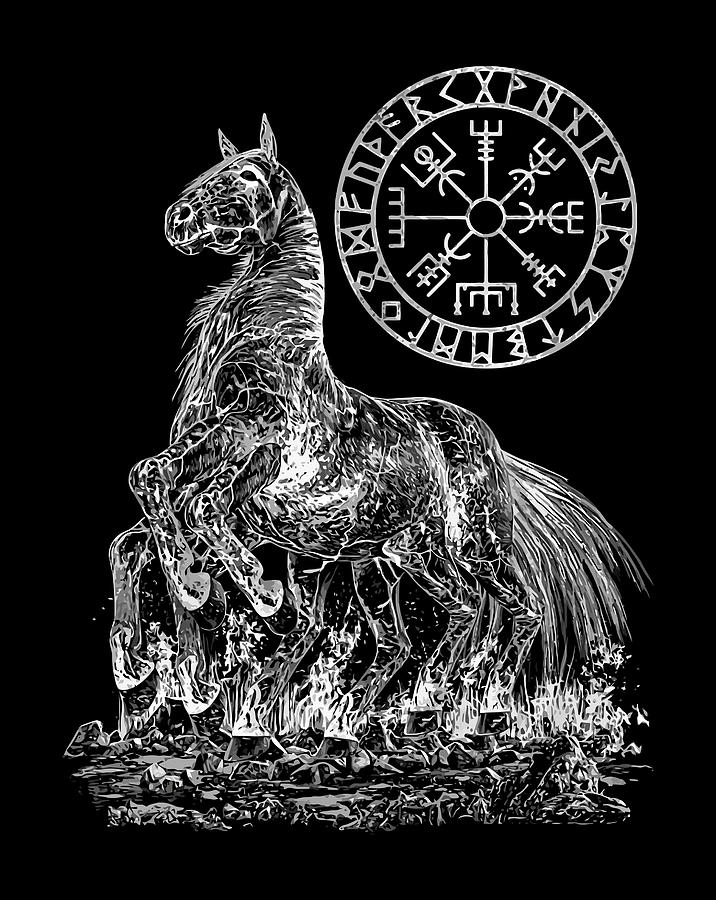

Vali then attacked Narfi, killing him, and the Aesir used Narfi’s entrails to bind Loki to three rocks in a cave. As punishment for Loki’s part in Baldr’s death, the Aesir turned his son Vali into a wolf. Baldr was Odin’s most beloved son and one of the most well-loved gods among the Aesir. Loki, the agent of chaos that he was, tricked Hodr into killing his twin, Baldr. Their only real claim to fame is that they were punished for their father’s misdeeds. Their names were Narfi and Vali, and they don’t play a significant role in Norse mythology or Loki’s own story. Loki had two children with his Aesir wife, Sigyn. In the most widely accepted versions of Norse myths, however, Loki has six children. For example, Loki and Thor are not brothers. Moreover, recent portrayals of Norse figures in pop-culture media, like the Marvel Cinematic Universe (MCU), take plenty of liberties with the characters. The genealogy and family ties of the Norse gods can get confusing, especially considering some myths contradict others. Is that how you picture him? AudioĬhatterbox Audio Theater offers a radio play of "The Walling of Asgard.Does Loki have a serpent child? See below Loki’s Six Children This picture has Sleipnir with four legs in front and four legs in back. This artist puts six of Sleipnir's legs in front, and two in back. Renowned young adult literature author Kevin Crossley-Holland tackles Norse mythology. Like it so much you want to own the book? The Penguin Classic's edition of the Prose Edda provides a modern, accessible translation by a professor of Icelandic and Old Norse studies at UCLA.Ī classic among mythical anthologies, with great artwork. Here's an image of the first page of the Codex Upsaliensis, the 14th-century manuscript of the Prose Edda, from a page about the Early Scandinavian Philology department at Uppsala University. The story of the walling of Asgard is found in Chapter 42. The first book of Snorri Sturluson's Prose Edda, the Gylfaginning, or Tricking of Gylfi, contains a question-and-answer game in which Gylfi's questions reveal the nature of the Norse cosmos. Timeless Myth's account of the walling of Asgard begins with a detailed description of the Norse cosmology and provides hyperlinks for many of the characters and places involved in the story. The Hurstwic Society's mission is to educate people about the history of the Viking Age. Here's an illustrated version of "The Walling of Asgard" from Hurstwic Norse mythology. The Walling of Asgard and the Birth of Sleipnir Resources Websites As for the ship made entirely of toenails? Sorry, can’t help you there. After you read our guide, you’ll never again have to wonder where the eight-legged horse named Sleipnir came from. So, if you want to impress people with your deep understanding of Norse mythology, this story is a pretty important one to know. The story of Sleipnir’s origin also explains the huge wall around Asgard, and adds yet another reason to the long list of reasons that the gods and giants hate each other so much. It turns out, Sleipnir’s the offspring of a stallion named Svadilfari and the trickster-god, Loki. Because, unlike the armpit-origin of the Jotun race or the ship made entirely of toenails, Odin’s eight-legged horse has a thorough explanation in Norse mythology – a whole story, in fact. Well, inquisitive Shmooper, you’re in luck. And, oh yeah, why the heck does he have eight legs? But you might still be wondering about where Sleipnir came from. Sleipnir’s general awesomeness explains why Odin calls him "the best of horses" and prefers him to any other ride. Sleipnir’s also the only horse that can carry his rider to the Underworld, Hel. Odin uses him to outrun Hrungnir and trap him in Asgard. If you’ve read the myths about "The Death of Balder" or "Thor and the Jotun Hrungnir," you may have noticed that Odin gets around on an eight-legged horse named Sleipnir.

Somewhat less gag-worthy, but still very weird, is Odin’s preferred mode of transport. Or consider that, during Ragnarok, the enemies of the gods will supposedly be ferried by a ship made entirely of dead peoples’ toenails. Isn’t it a little crazy – and very gross – that, in Norse mythology, the whole race of giants (called Jotun) grew out of another giant’s armpit? Talk about bad b.o. Sometimes, it’s not so much the plot of the stories themselves, but the little details, that raise eyebrows. These stories can be seriously strange and wacky. You don’t have to read very much Norse mythology before you get a bit weirded out.


 0 kommentar(er)
0 kommentar(er)
